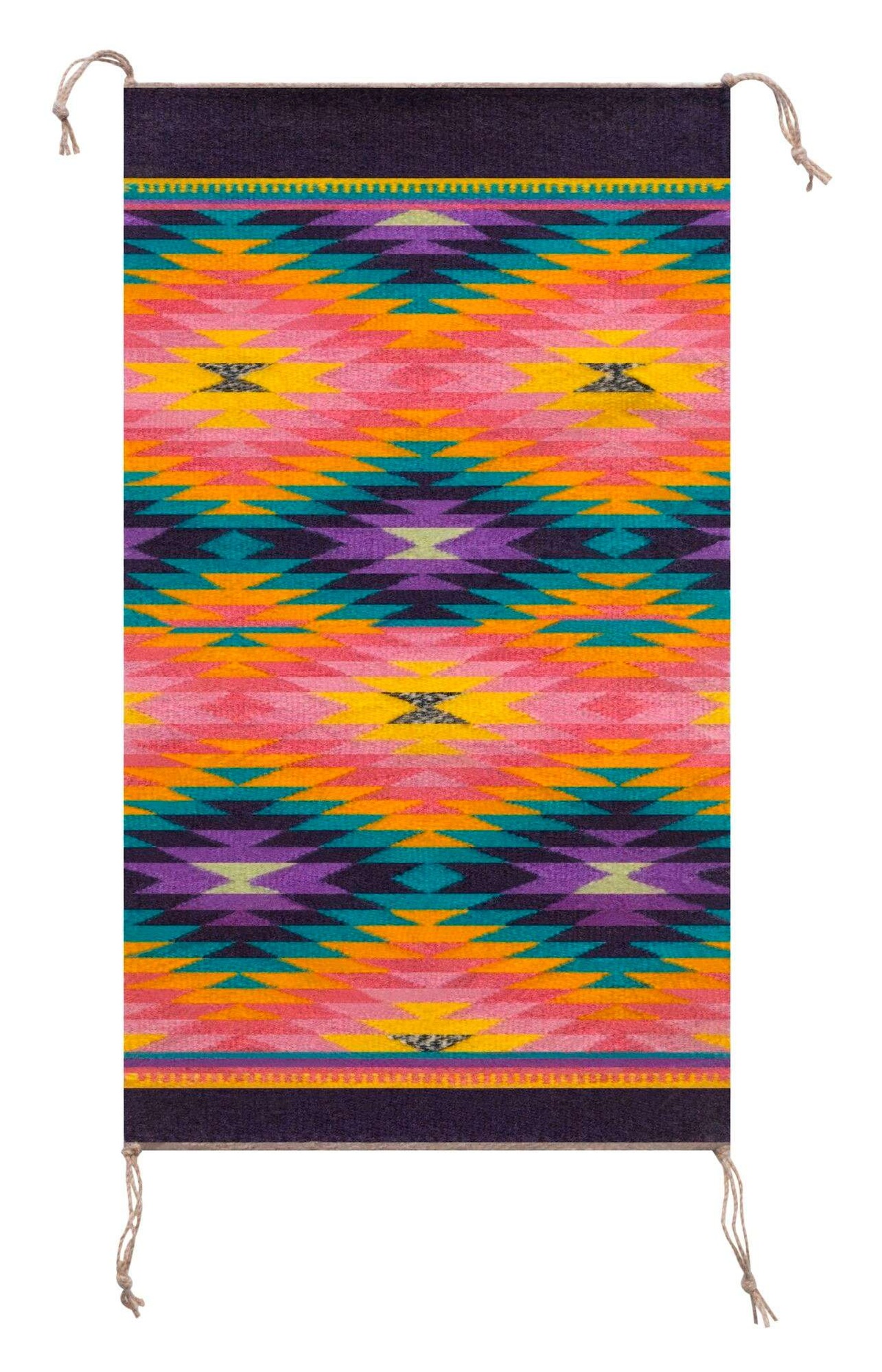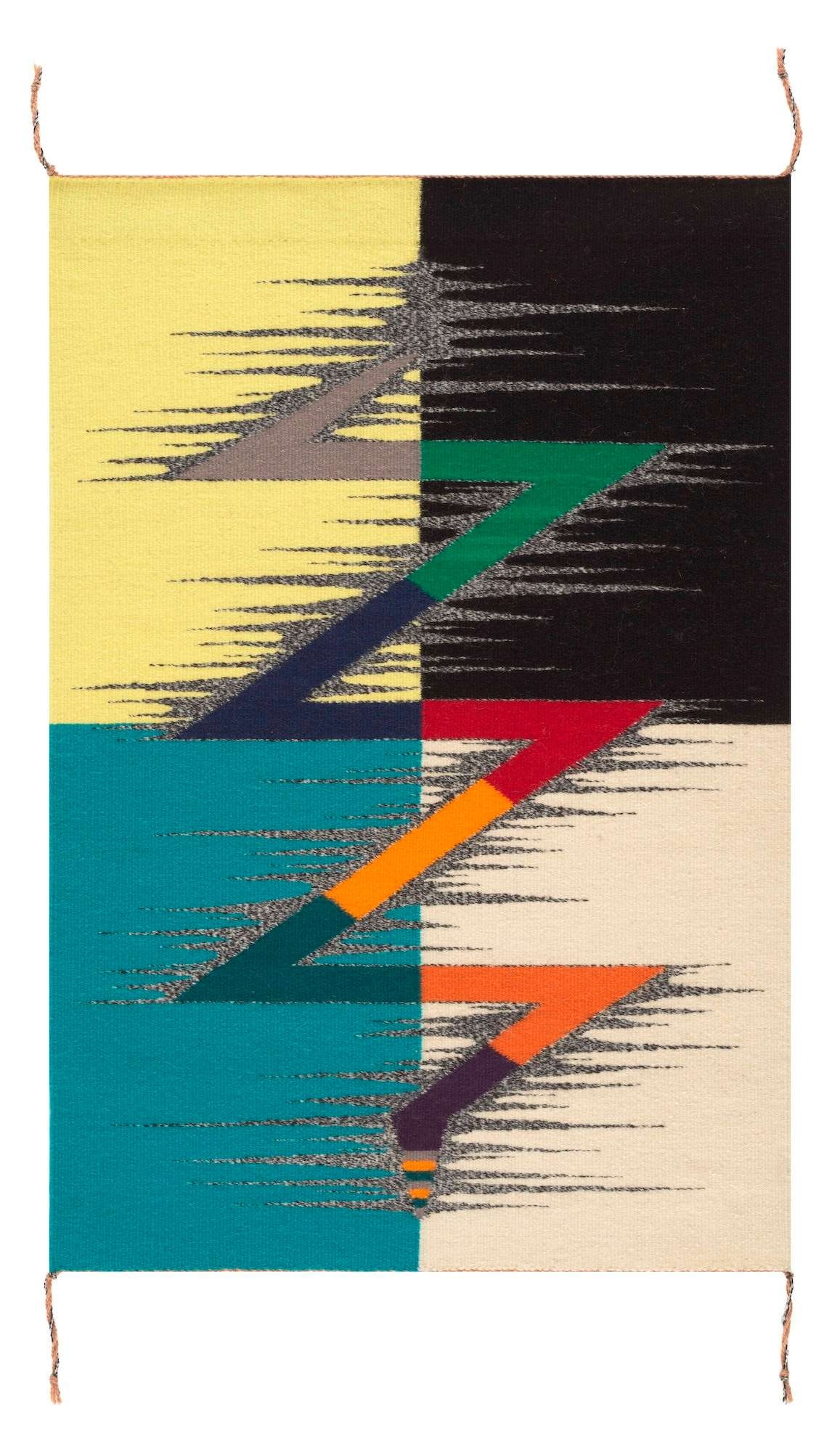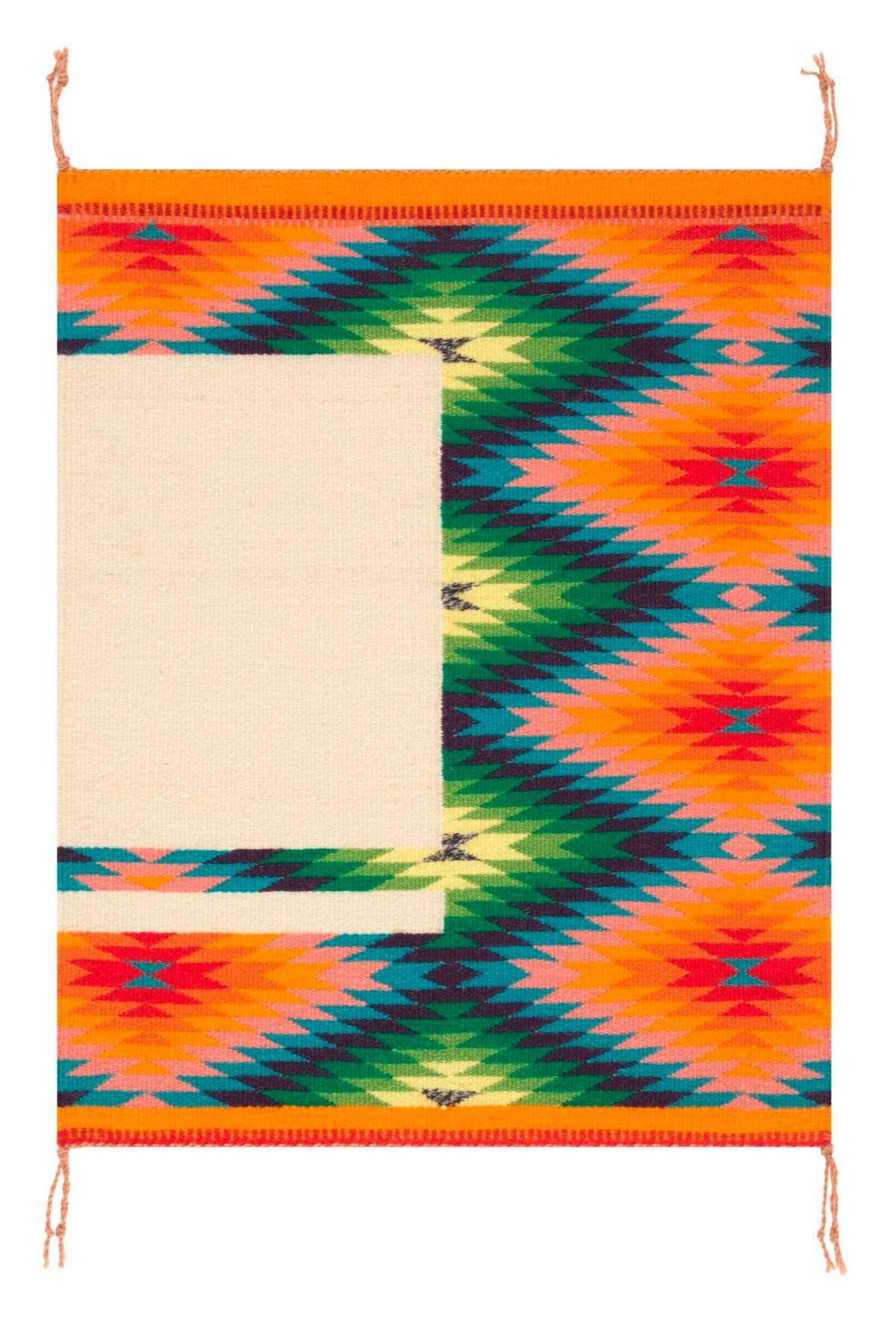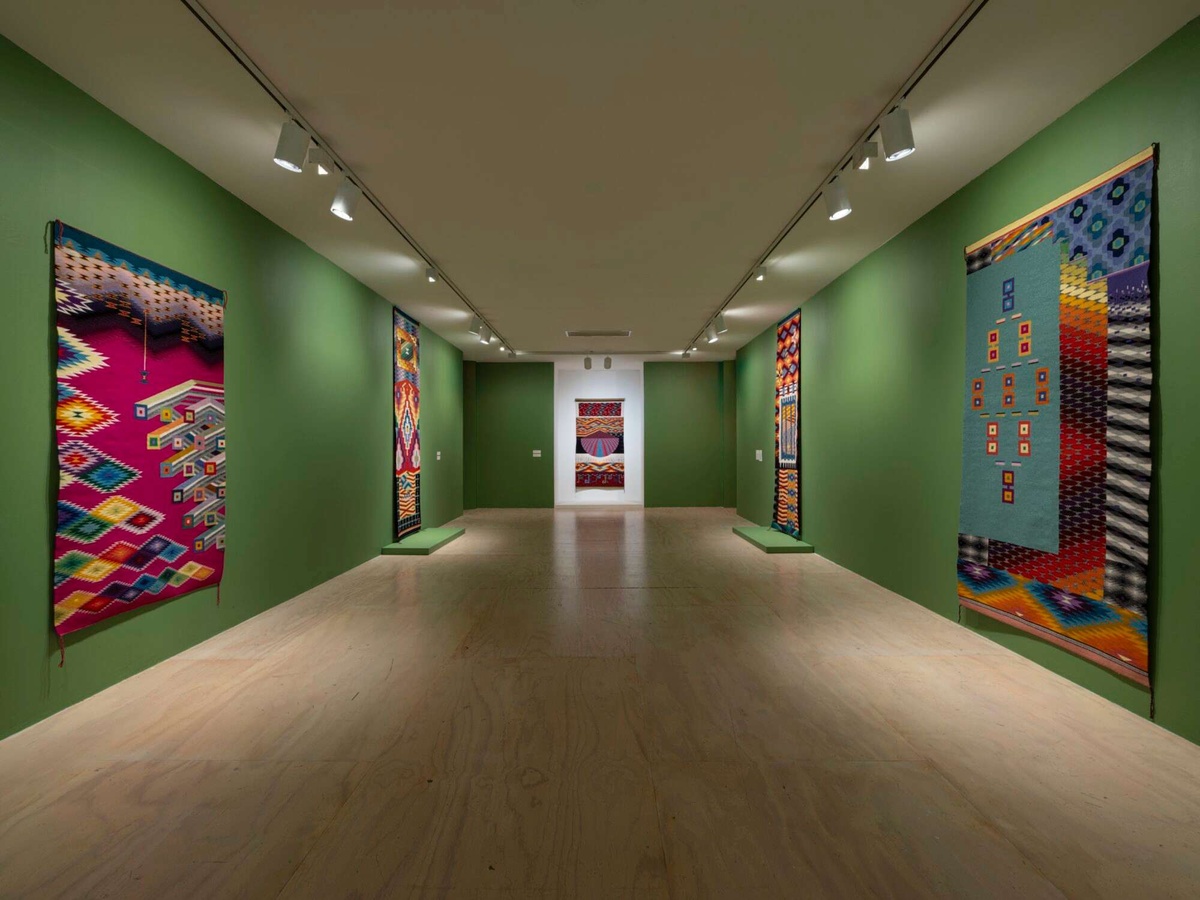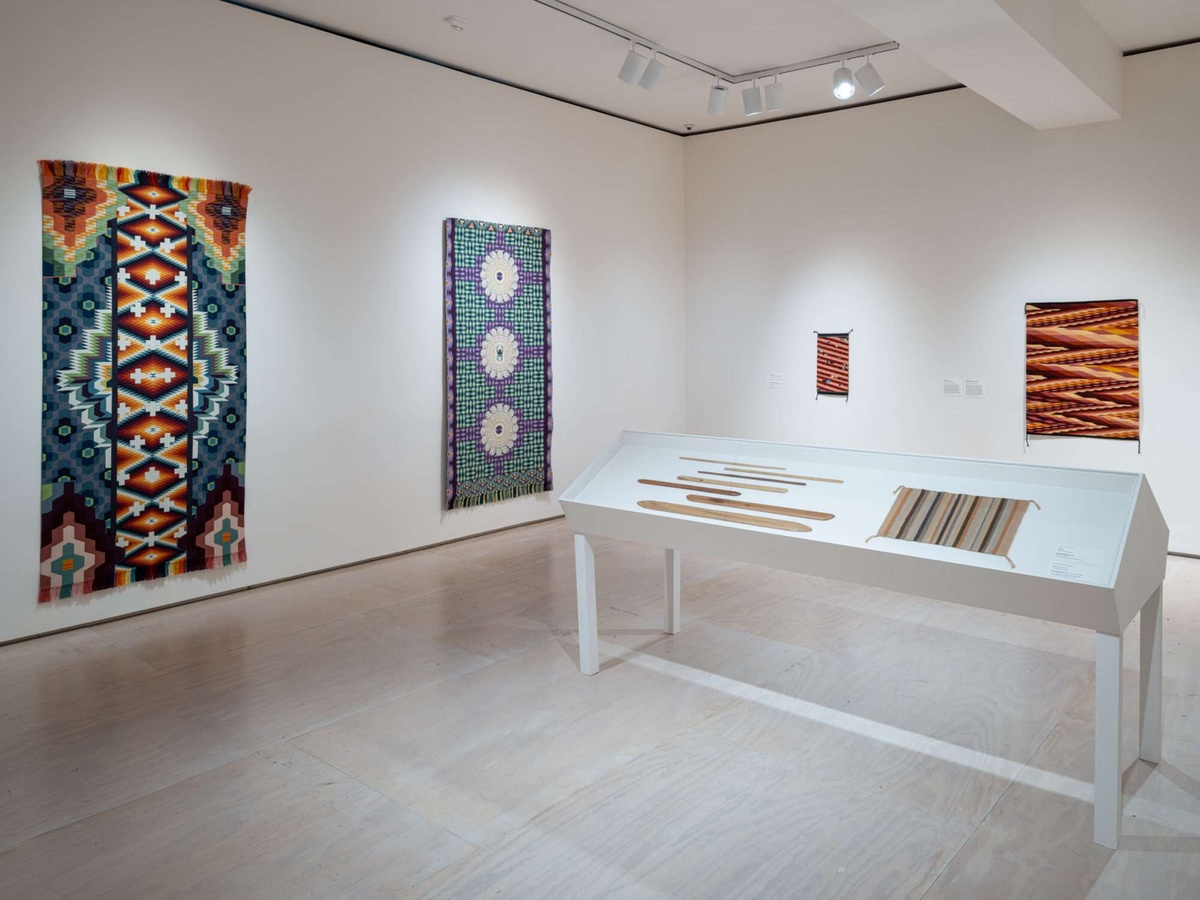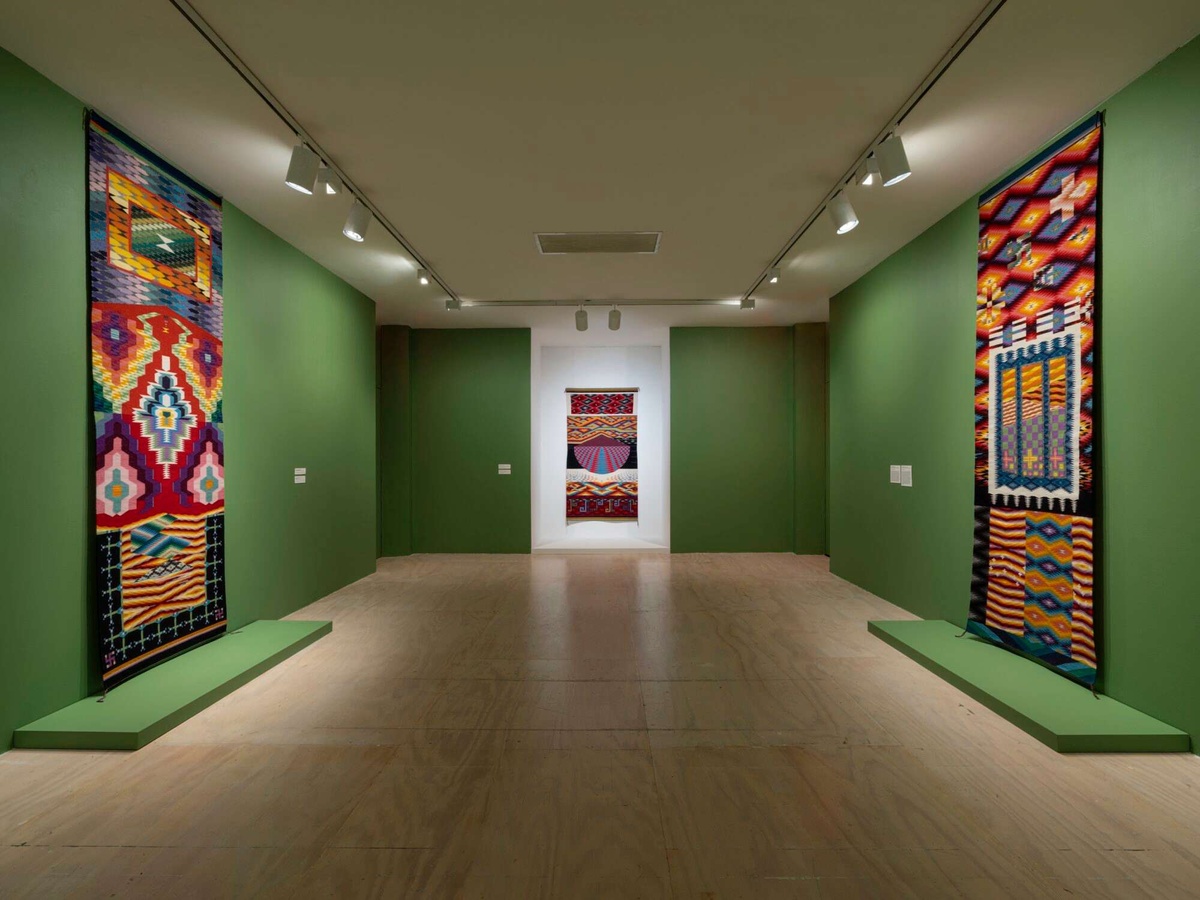Melissa Cody
Webbed Skies
Ends Sep 9
- On View
- Exhibition
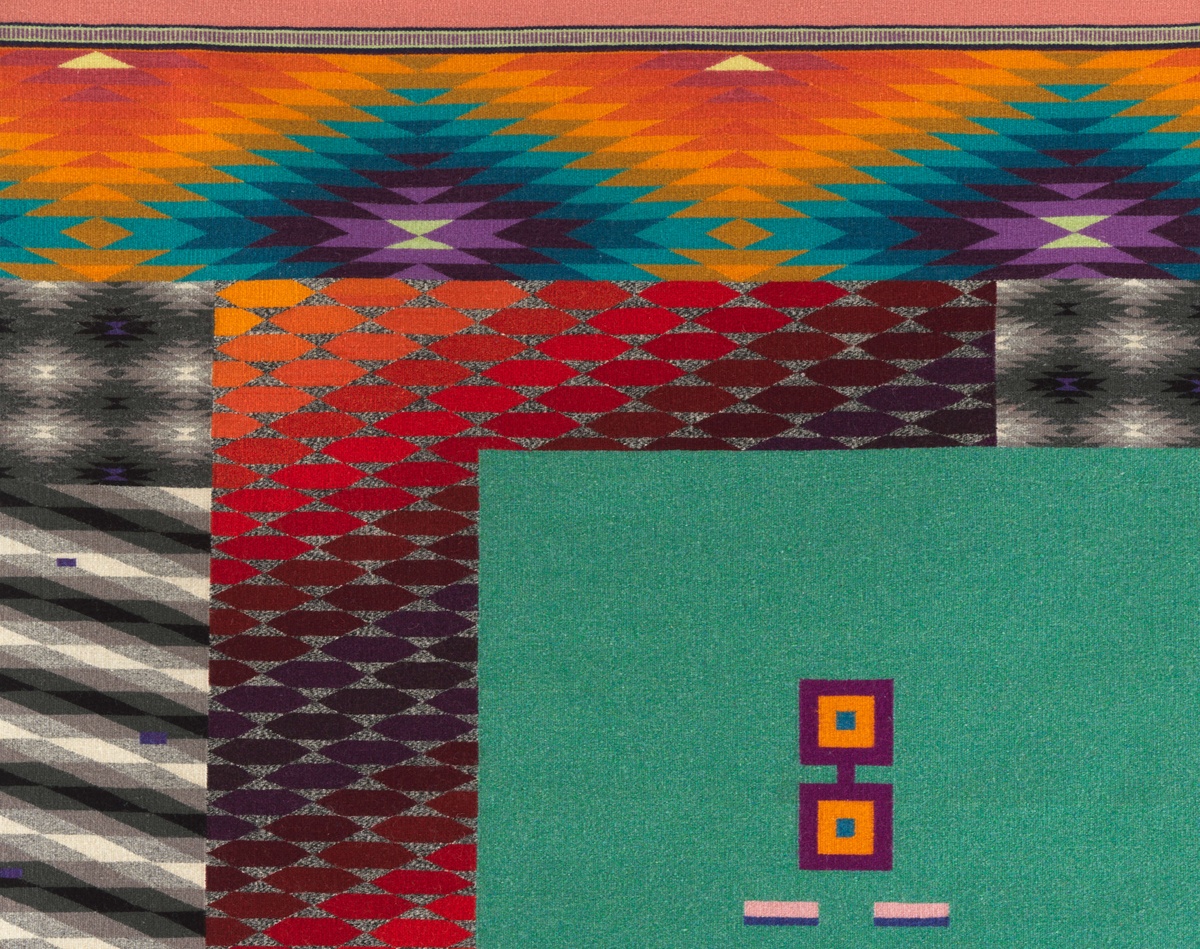
Melissa Cody. Untitled. 2022. Wool warp, weft, selvedge cords, and aniline dyes. 8′10′′ x 56′′ (269 x 142 cm). Courtesy the artist
[Español abajo]
The first major solo museum presentation of fourth-generation Navajo weaver Melissa Cody (b. 1983, No Water Mesa, Arizona) spans the last decade of her practice, showcasing over 30 weavings and a major new work produced for the exhibition. Using long-established weaving techniques and incorporating new digital technologies, Cody assembles and reimagines popular patterns into sophisticated geometric overlays, incorporating atypical dyes and fibers. Her tapestries carry forward the methods of Navajo Germantown weaving, which developed out of the wool and blankets that were made in Germantown, Pennsylvania and supplied by the US government to the Navajo people during the forced expulsion from their territories in the mid-1800s. During this period, the rationed blankets were taken apart and the yarn was used to make new textiles, a practice of reclamation which became the source of the movement. While acknowledging this history and working on a traditional Navajo loom, Cody’s masterful works exercise experimental palettes and patterns that animate through reinvention, reframing traditions as cycles of evolution.
Melissa Cody is a Navajo/Diné textile artist and enrolled member of the Navajo/Diné nation. Cody grew up on a Navajo Reservation in Leupp, Arizona and received a Bachelor’s degree in Studio Arts and Museum Studies from Institute of American Indian Arts, Santa Fe. Her work has been featured in The Barnes Foundation, Philadelphia (2022); Crystal Bridges Museum of American Art, Bentonville, AR (2021); National Gallery of Canada, Ottawa (2019–2020); Museum of Northern Arizona, Flagstaff (2019); SITE Santa Fe (2018–19); Ingham Chapman Gallery, University of New Mexico, Albuquerque (2018); Navajo Nation Museum, Window Rock (2018); and the Museum of Contemporary Native Arts, Institute of American Indian Arts, Santa Fe (2017–18). Cody’s works are in the collections of the Stark Museum of Art, Orange, Texas; the Minneapolis Institute of Arts; and The Autry National Center, Los Angeles. In 2020, she earned the Brandford/Elliott Award for Excellence in Fiber Art.
—
MoMA PS1 presentará la primera exposición individual de Melissa Cody (n. 1983, No Water Mesa, Arizona), tejedora navajo de cuarta generación. Melissa Cody: Webbed Skies [Cielos palmeados] abarca la última década de su práctica artística, presentando más de 30 tejidos y una nueva comisión importante. Cody utiliza métodos tradicionales, patrones complejos y tintes hechos a mano para resaltar los tapices como tecnologías potentes para la narración visual, sugiriendo su influencia en la automatización digital actual. Los tapices de Cody siguen los métodos del tejido tradicional navajo que se desarrolló a partir de la lana y las mantas que se fabricaban en Germantown, Pensilvania, y que el gobierno de Estados Unidos suministró al pueblo navajo durante la expulsión forzada de sus territorios a mediados del siglo XIX. Si bien Cody reconoce esta historia y trabaja en un telar tradicional navajo, sus obras magistrales ejercitan paletas y patrones experimentales que anima a través de la reinvención, reformulando las tradiciones como ciclos evolutivos.
Melissa Cody es una artista textil navajo/diné y miembro inscrita de la nación navajo. Cody creció en una reserva en Leupp, Arizona, y recibió una licenciatura en arte y estudios de museos por el Institute of American Indian Arts, Santa Fe. Su obra se ha exhibido en The Barnes Foundation, Filadelfia (2022); Crystal Bridges Museum of American Art, Bentonville, AR (2021); National Gallery of Canada, Ottawa (2019-2020); Museum of Northern Arizona, Flagstaff (2019); SITE Santa Fe (2018-19); Ingham Chapman Gallery, University of New Mexico, Albuquerque (2018); Navajo Nation Museum, Window Rock (2018); y Museum of Contemporary Native Arts, Institute of American Indian Arts, Santa Fe (2017–18). Las obras de Cody se encuentran en las colecciones del Stark Museum of Art, Orange, Texas; the Minneapolis Institute of Arts; and The Autry National Center, Los Ángeles. En 2020, obtuvo el Premio Brandford/Elliott a la Excelencia en Arte con Fibras.
![World Traveler [hi-res].jpg](https://d1tcycker2ppj.cloudfront.net/output=f:jpg,q:60/resize=width:1200,fit:max/pZZnh2STwK1dbgNCVGvu)
![Into the Depths, She Rappels [hi-res].jpg](https://d1tcycker2ppj.cloudfront.net/output=f:jpg,q:60/resize=width:1200,fit:max/g0IUJnGTh6VfSlOHg6k7)

